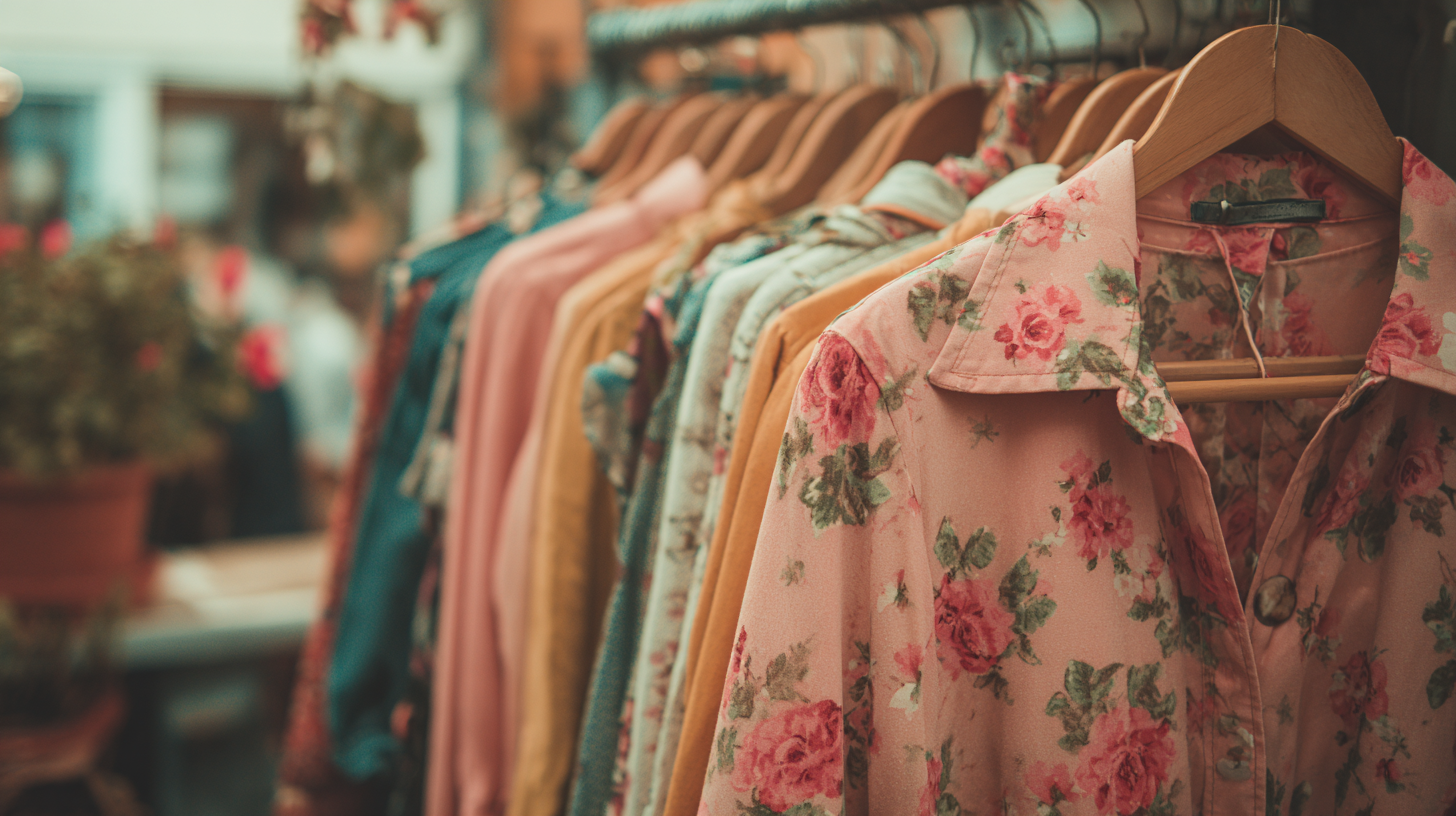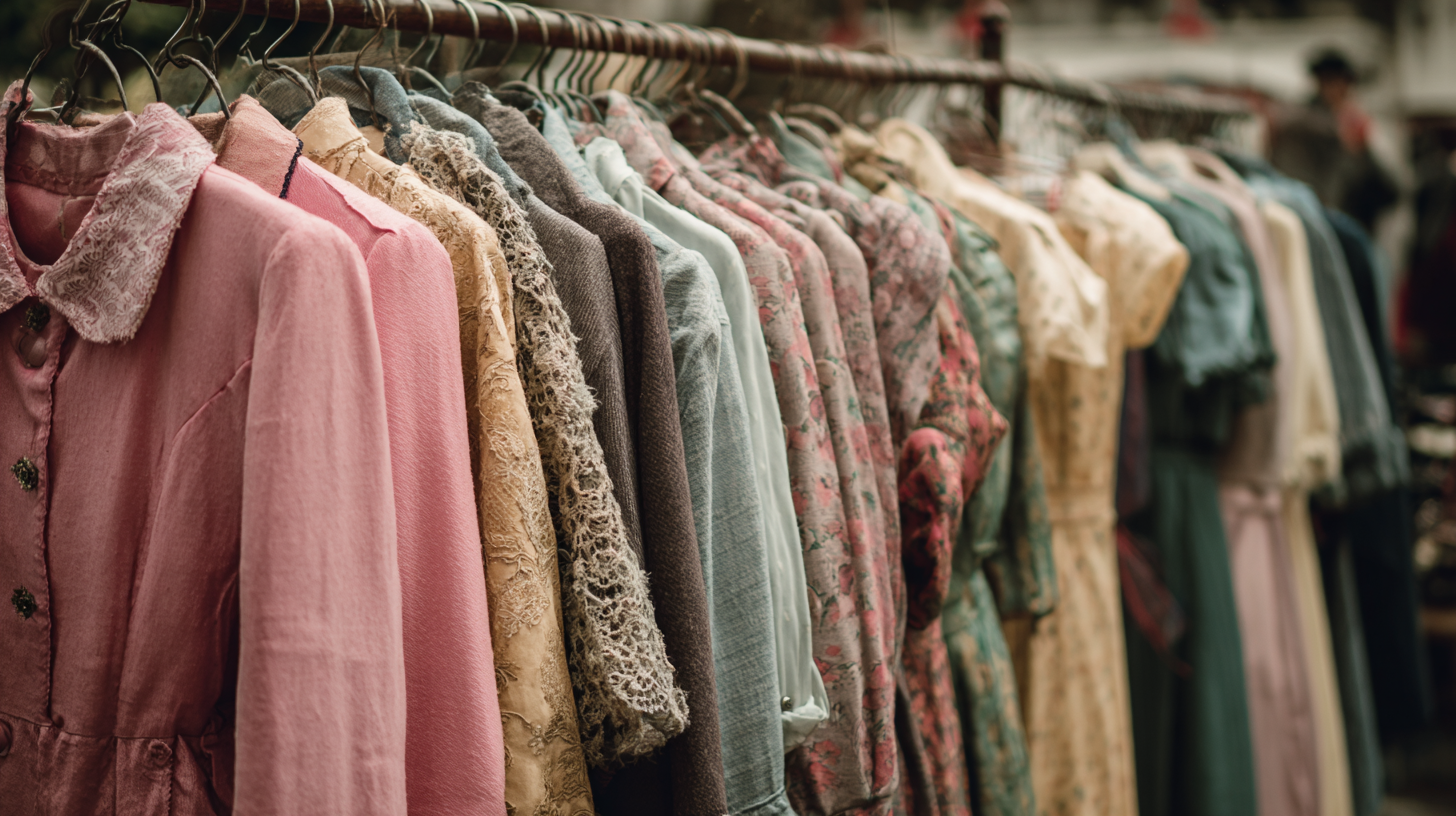Why Vintage Womens Clothing is the Perfect Choice for Sustainable Fashion
 In today's fast-paced fashion industry, the quest for sustainability has become more critical than ever, leading many to explore the benefits of vintage womens clothing. This unique category not only embodies individual style but also offers an eco-friendly alternative to contemporary fashion trends. By choosing vintage pieces, consumers contribute to reducing waste and pollution associated with fast fashion, while also embracing a timeless aesthetic that often features high-quality materials and craftsmanship.
In today's fast-paced fashion industry, the quest for sustainability has become more critical than ever, leading many to explore the benefits of vintage womens clothing. This unique category not only embodies individual style but also offers an eco-friendly alternative to contemporary fashion trends. By choosing vintage pieces, consumers contribute to reducing waste and pollution associated with fast fashion, while also embracing a timeless aesthetic that often features high-quality materials and craftsmanship.
In this article, we will delve into the advantages of selecting vintage womens clothing, sharing practical tips for incorporating these treasures into your wardrobe, and showcasing how such choices can positively impact both personal style and the planet. As we navigate the ethos of sustainable fashion, vintage womens clothing stands out as a perfect choice for those looking to make mindful and stylish decisions in their attire.
How to Identify Quality Vintage Women's Clothing for Sustainable Fashion
When it comes to sustainable fashion, identifying quality vintage women's clothing is essential. Start by examining the fabric and craftsmanship. High-quality vintage pieces are often made from durable materials like cotton, silk, or wool, showcasing intricate stitching and meticulous construction. Look for signs of wear, but also consider the overall condition; a well-maintained item, even from decades ago, can be a treasure.

Another key aspect to consider is the brand history. Many reputable brands from the past prioritize quality over fast fashion trends, which often reflects in their vintage options. Researching these brands can help you to recognize unique designs and superior craftsmanship. Additionally, check for labels and tags; vintage clothing often carries labels that signify a dedicated approach to design, which can indicate higher quality. By taking these steps, you not only cultivate a sustainable wardrobe but also celebrate the art of fashion history.
How to Style Vintage Pieces for a Modern Look Without Compromising Sustainability
Styling vintage women's clothing can be both an art and a sustainable choice, allowing individuals to create unique looks while promoting eco-friendliness. To achieve a modern aesthetic with vintage pieces, start by mixing and matching. Pair a classic vintage blouse with contemporary high-waisted jeans or sleek tailored trousers to achieve a balanced look that feels both fresh and timeless. This combination not only enhances the vintage piece but also infuses modernity into your wardrobe.
Accessories play a crucial role in updating vintage clothing. Opt for minimalist jewelry and current handbag trends to help bridge the gap between eras. For example, a retro dress can be elevated with a modern belt and statement shoes, creating a harmonious blend of old and new. Incorporating current color palettes or textures, such as pairing a vintage floral dress with a structured leather jacket, effortlessly modernizes the outfit while ensuring sustainability through the use of pre-loved clothing.
Why Vintage Womens Clothing is the Perfect Choice for Sustainable Fashion - How to Style Vintage Pieces for a Modern Look Without Compromising Sustainability
| Vintage Piece | Styling Tips | Sustainability Benefits | Price Range |
|---|---|---|---|
| Vintage Denim Jacket | Pair with a modern tee and high-waisted jeans for a trendy look. | Reduces waste and is often made from organic materials. | $50 - $150 |
| Maxi Dress | Layer with a fitted jacket and ankle boots for a chic look. | Extends the life of garments and promotes recycling. | $30 - $100 |
| Statement Blouse | Tuck into a pencil skirt for a polished office outfit. | Supports slow fashion and often unique designs. | $20 - $75 |
| A-Line Skirt | Style with a fitted crop top and heels for a fun evening look. | Less resource-intensive than fast fashion items. | $25 - $80 |
| Retro Handbag | Use as a pop of color against a neutral outfit. | Promotes circular fashion and reduces landfill waste. | $15 - $60 |
How to Care for Vintage Clothing to Extend Its Lifespan and Reduce Waste
Caring for vintage clothing is essential in extending its lifespan and minimizing waste, making it a sustainable fashion choice. First, it’s important to understand how to properly clean these unique pieces. Always read care labels when available, as vintage materials can be delicate. Hand washing is often gentler than machine washing; use cold water and mild detergents to preserve fabric integrity. For items that require dry cleaning, opt for eco-friendly cleaners that avoid harmful chemicals.

Storing vintage clothing correctly is equally crucial. Avoid direct sunlight, which can fade fabrics over time. Instead, store garments in a cool, dark place, preferably in breathable garment bags made from cotton or muslin. Additionally, regularly check your vintage collection for any signs of wear or damage, such as loose seams or small tears. Promptly repairing these issues can prevent further deterioration, allowing you to enjoy your vintage pieces for many years to come. Implementing these care practices not only prolongs the life of vintage garments but also supports the principles of sustainable fashion by reducing waste.
How to Source Authentic Vintage Women's Clothing from Sustainable Retailers
When it comes to sourcing authentic vintage women's clothing, start by exploring sustainable retailers known for their curated collections. Look for shops that prioritize eco-friendly practices, such as those who use recycled materials in their packaging or have transparent supply chains. Online platforms dedicated to vintage fashion also offer extensive selections from various eras. Websites specializing in second-hand goods can often lead you to one-of-a-kind pieces that bring personality to your wardrobe while promoting sustainability.
Visiting local thrift stores and consignment shops is another excellent way to find authentic vintage items. These stores often carry unique garments that reflect different styles and trends from the past, giving you a chance to uncover treasures that are not available anywhere else. Additionally, attending vintage fairs or markets can provide a more immersive experience, allowing you to connect with vendors who are knowledgeable about the history and quality of their offerings. Engaging with these retailers not only helps in finding sustainable fashion options but also supports small businesses committed to ethical practices.
Why Vintage Women's Clothing is the Perfect Choice for Sustainable Fashion
This chart illustrates the various benefits of choosing vintage women's clothing as a sustainable fashion option. It highlights the high scores in quality and sustainability, showing that vintage clothing not only offers unique styles but also supports eco-friendly practices.
How to Mix and Match Vintage with Contemporary Fashion for a Unique Wardrobe
Mixing vintage women's clothing with contemporary fashion is an exciting way to create a unique wardrobe that stands out. Vintage pieces possess a distinctive charm and individuality that often becomes diluted in mass-produced clothing. To begin, select key vintage items such as patterned skirts or oversized blazers, which can act as statement pieces in your outfit. Pairing these with modern basics, like fitted turtlenecks or cropped jeans, allows the vintage items to shine while maintaining a balanced and trendy look.
Accessorizing is another effective method to blend styles seamlessly. For instance, incorporating modern accessories like chic handbags or minimalist jewelry can elevate the overall aesthetic and prevent the outfit from feeling dated. Additionally, consider juxtaposing vintage prints or textures with sleek, contemporary footwear, such as ankle boots or stilettos, to create an interesting visual contrast. This approach not only personalizes your style but also emphasizes the sustainability aspect of vintage clothing by promoting the idea of reusing and repurposing unique finds. Embrace the challenge of mixing eras, and your wardrobe will reflect a creative, eco-conscious identity.


